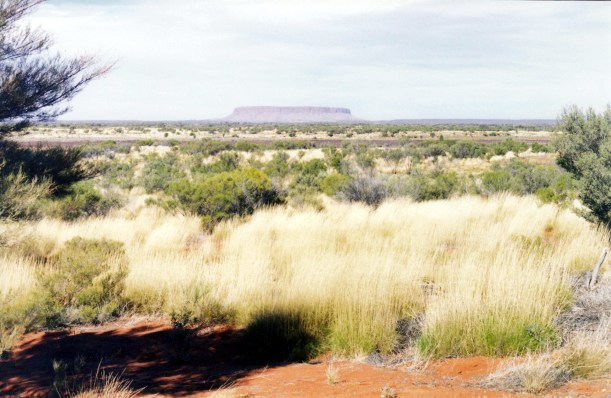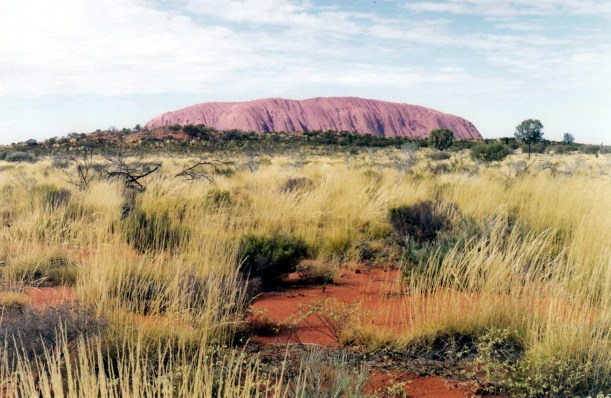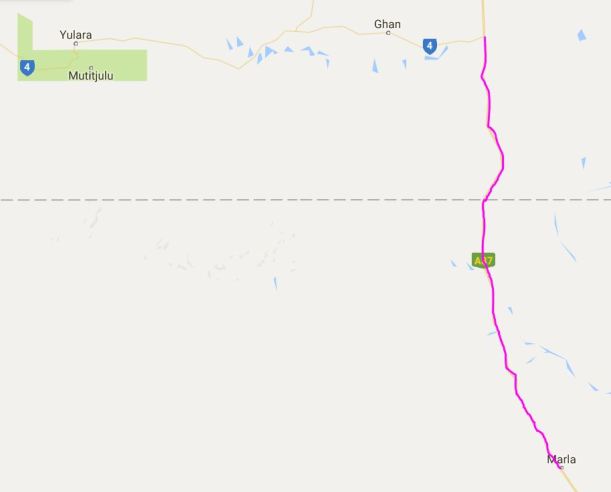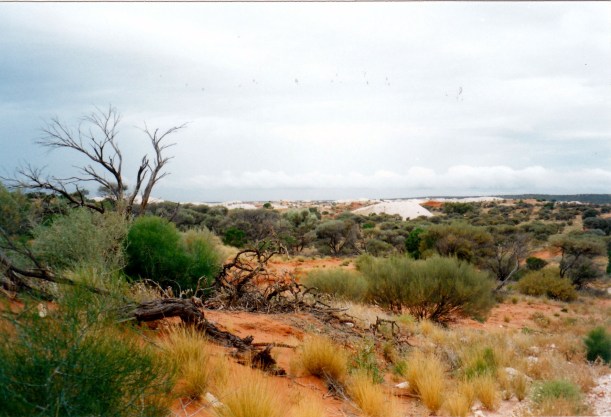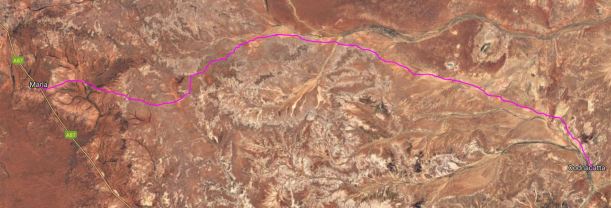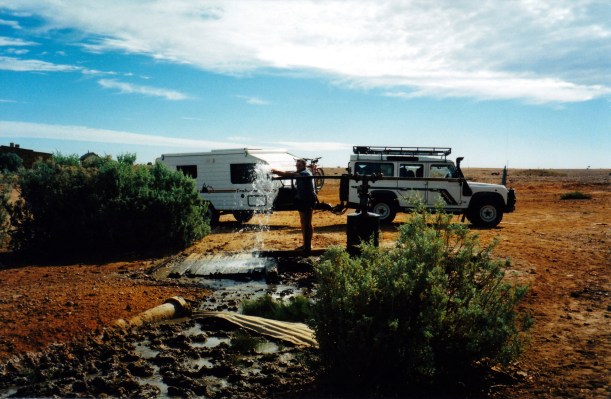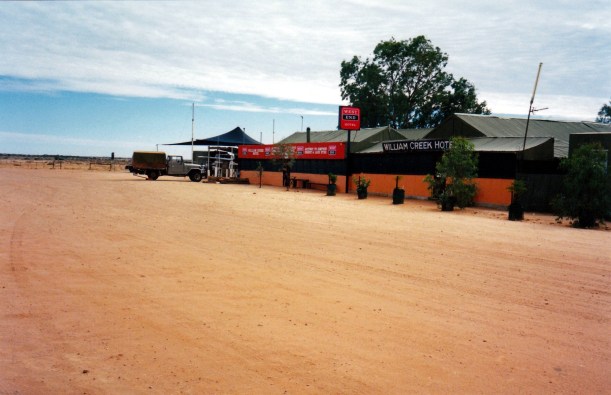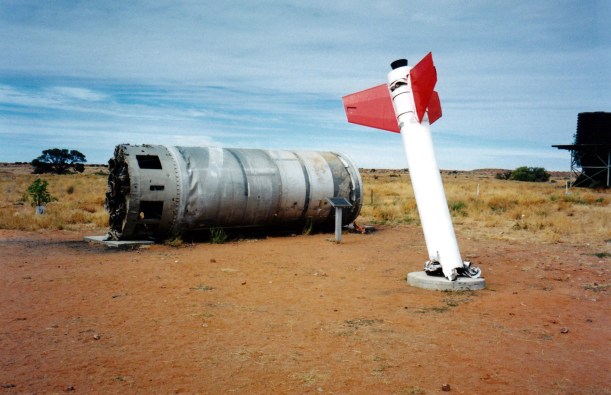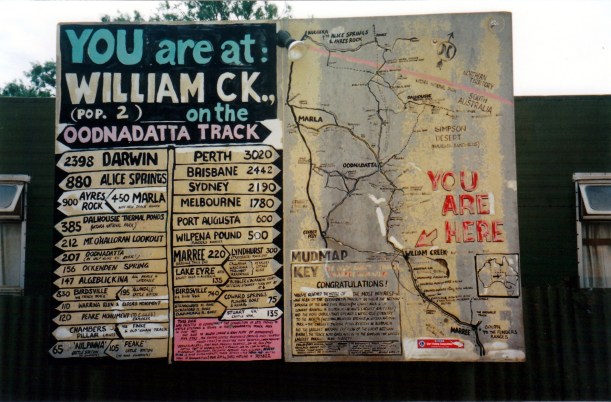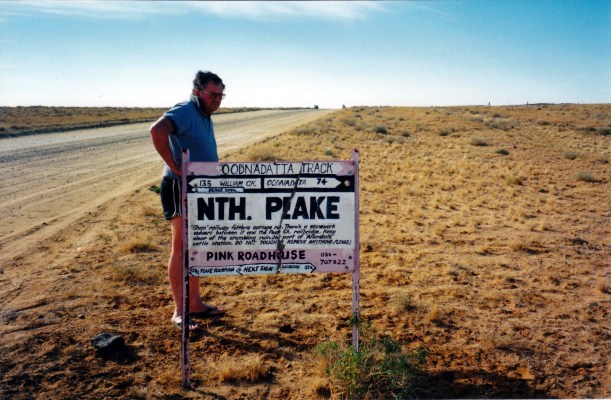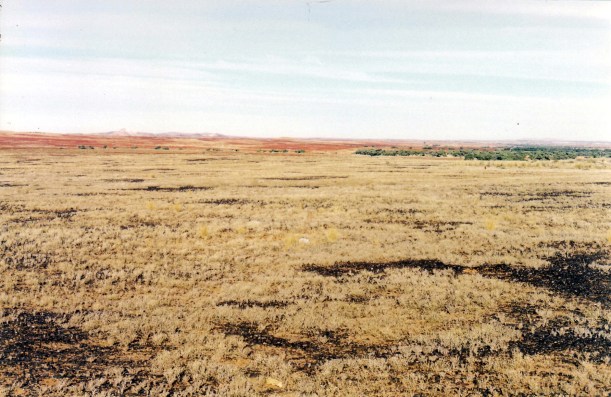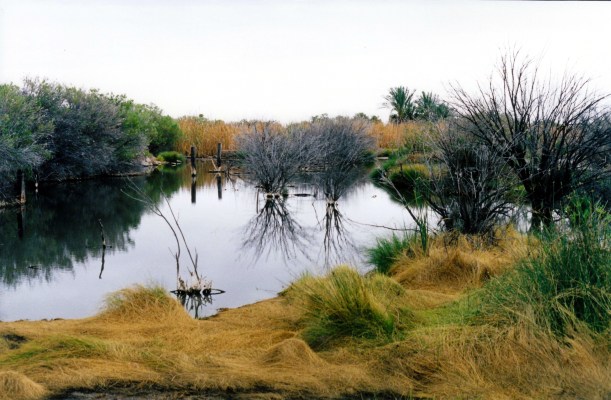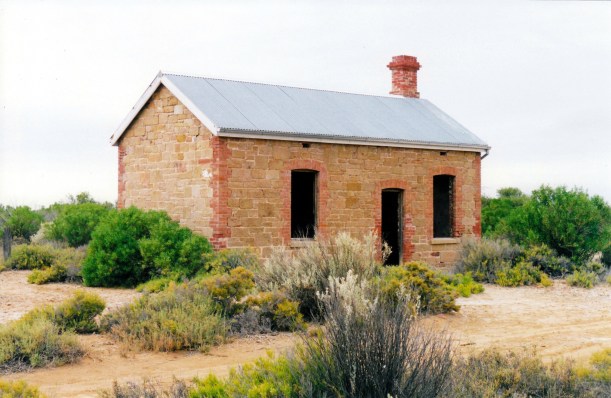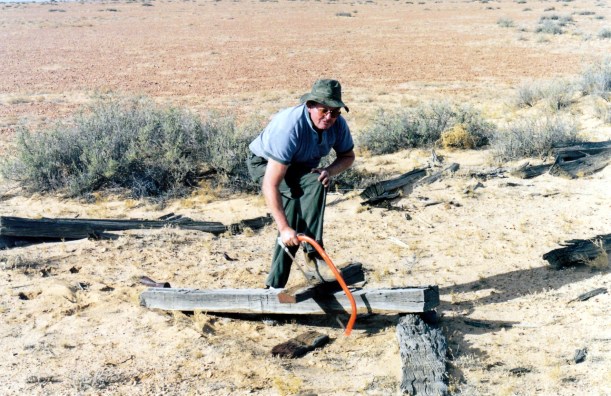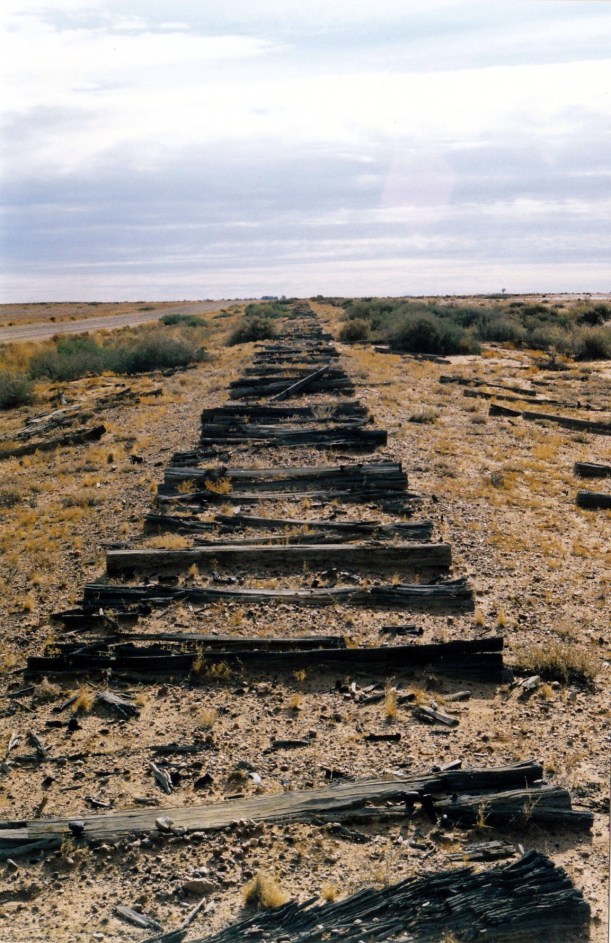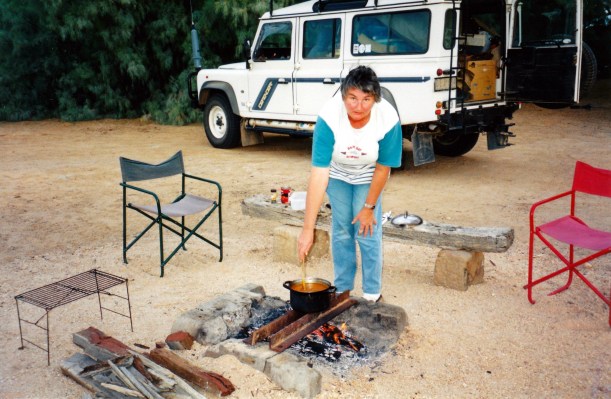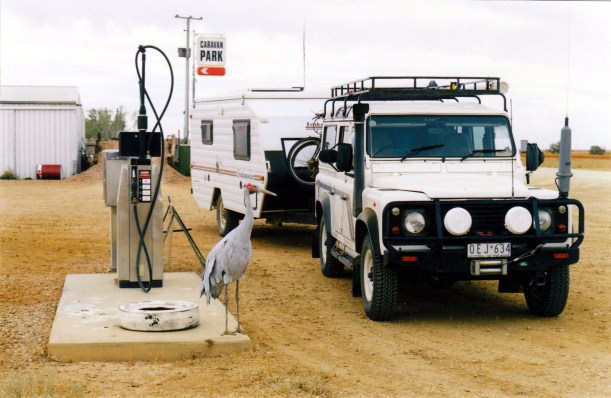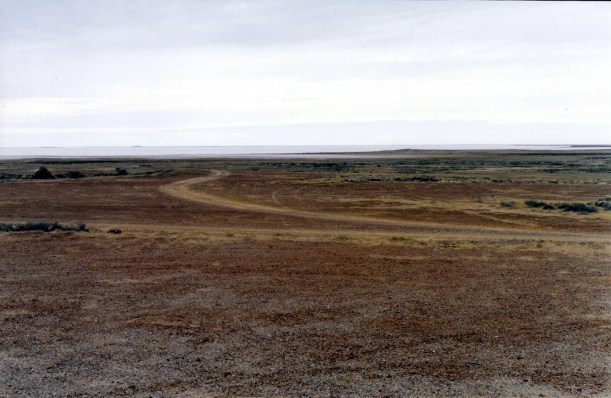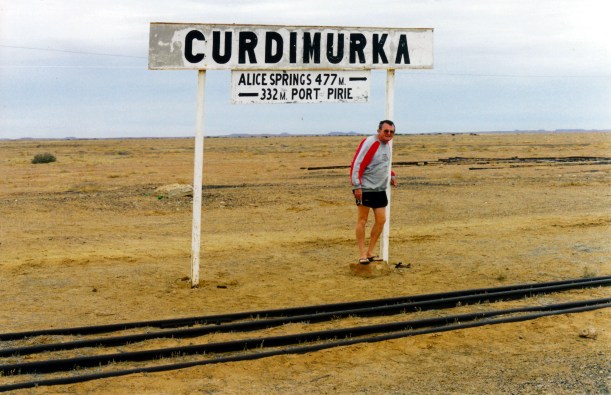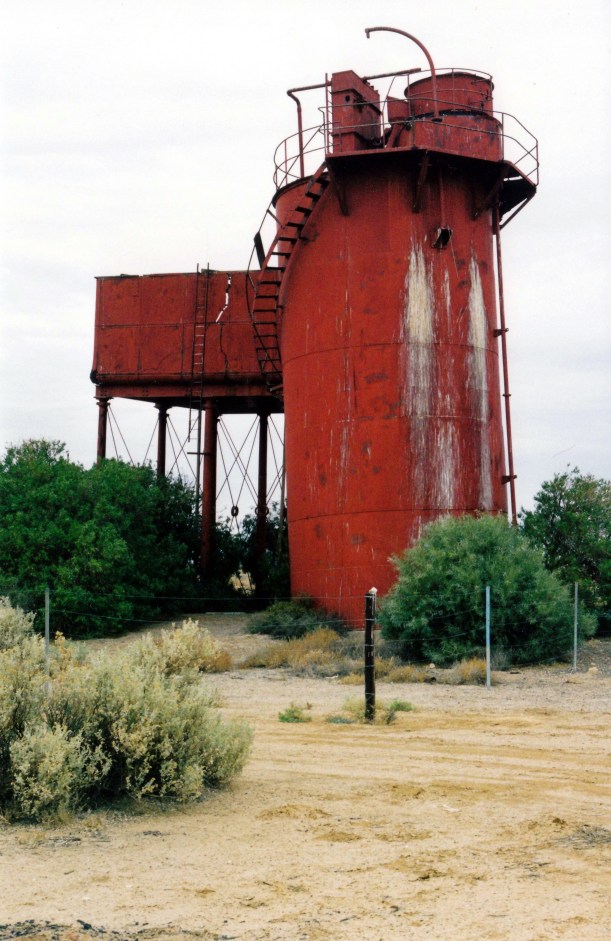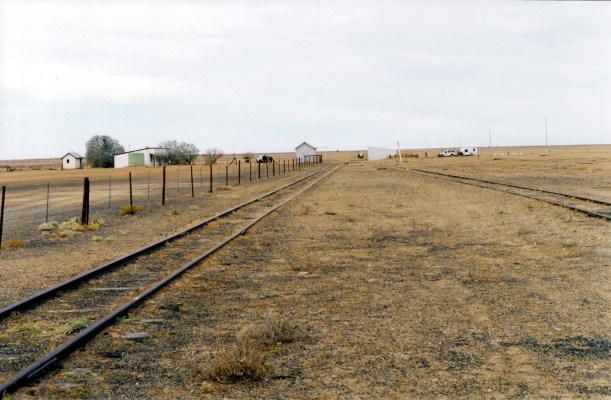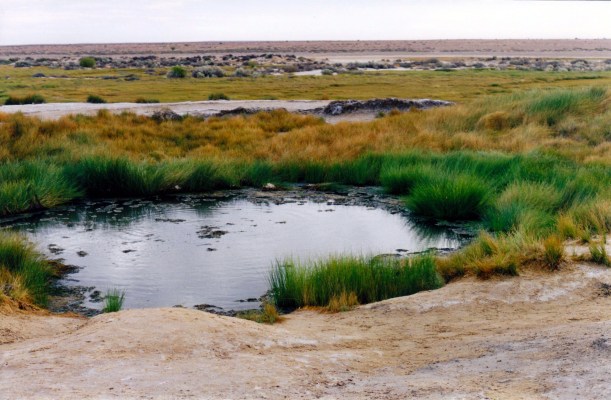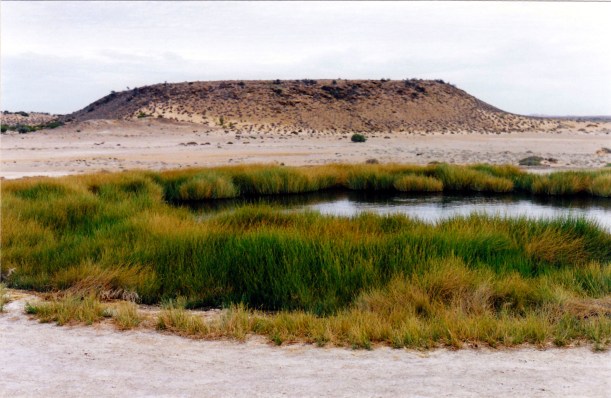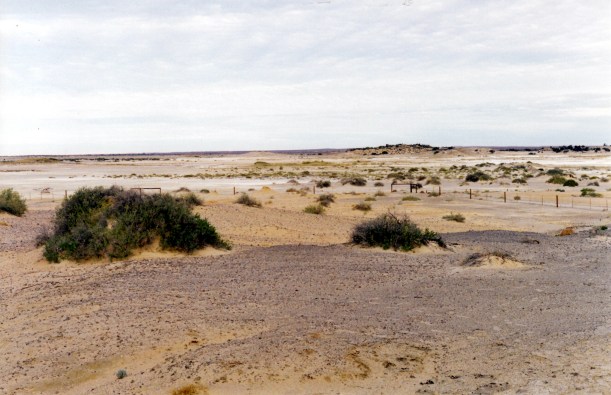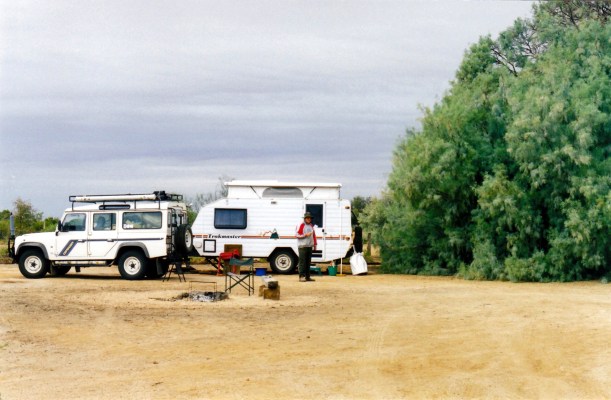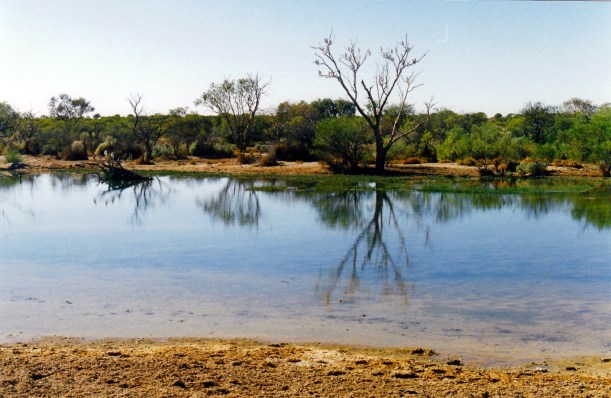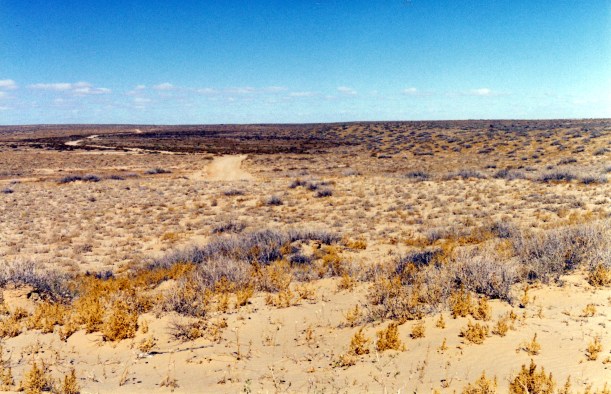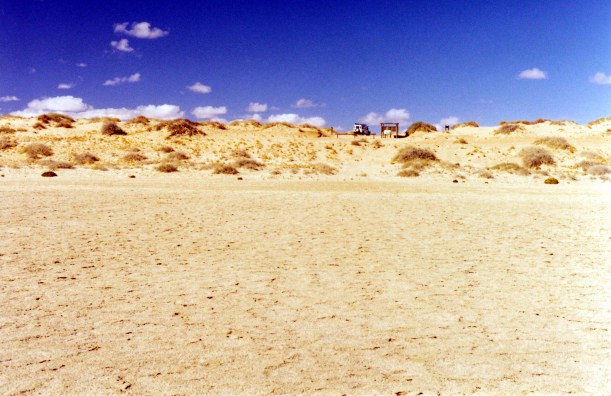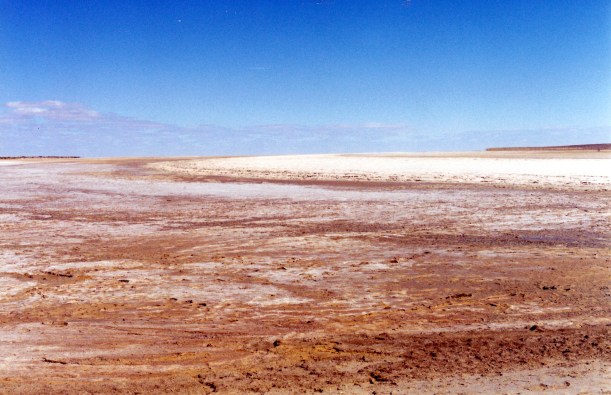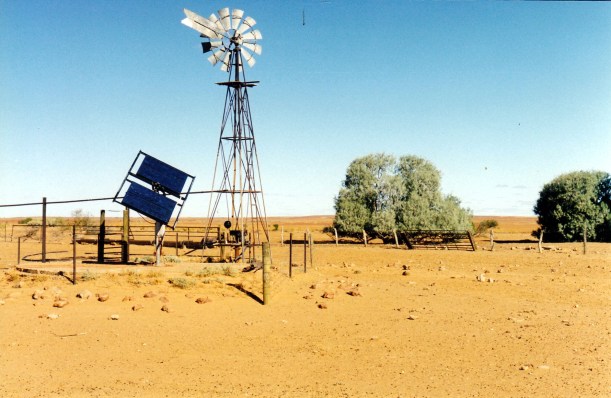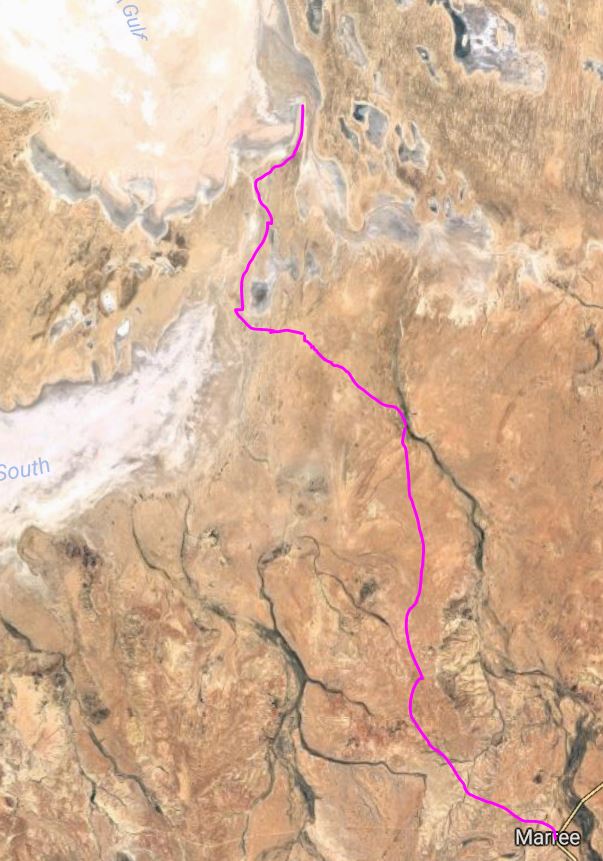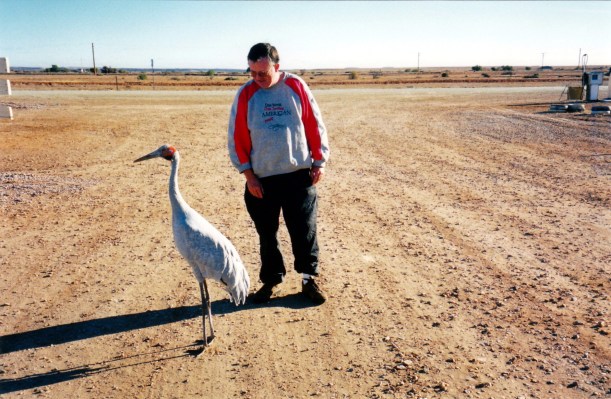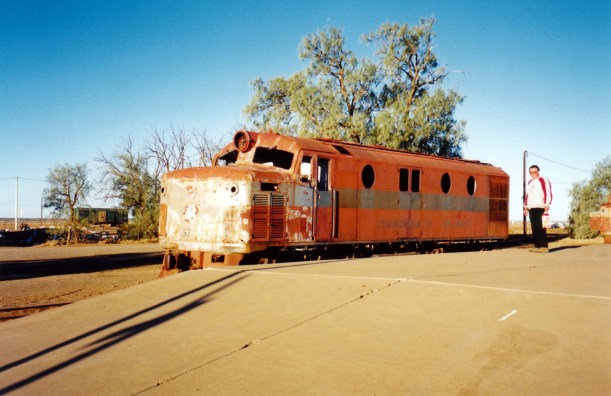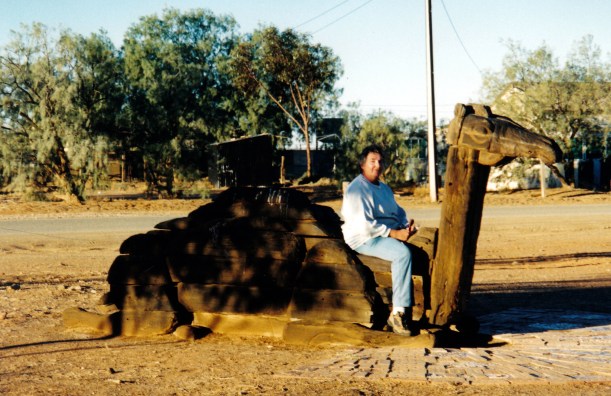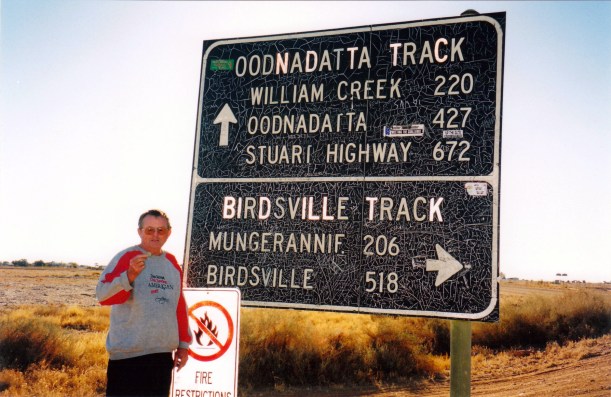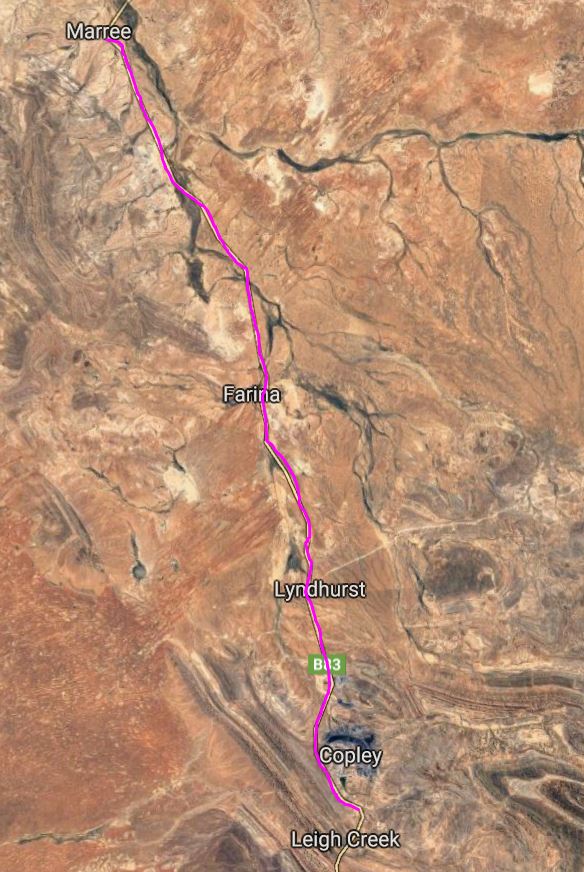WEDNESDAY 2 JUNE YULARA
There was some rain in the early hours of this morning, enough to dampen the ground and make the air smell tartly sharp. The ground soon dried out as the sun got stronger. The cloud of the morning thinned out later in the day.
We have grapefruit for breakfast again. I have missed the morning citrus input.
I did two loads of washing. Our very grubby clothes from the last week came cleaner than I expected.
We drove to the shops, where I put in three rolls of film for processing.
Then we set out for Ayers Rock. At the Entry Station, about 8kms from Yulara, it cost us $30 for a 5 day Entry Pass into the National Park. We could not talk the lady into extending it for a sixth day, so our last day here will have to be a “veg” day – that’s ok.
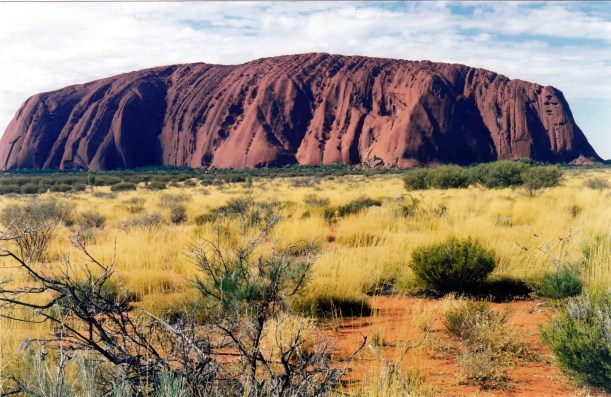
Closer to Ayers Rock. The climbing route is up the part that projects closest to us, here.
The drive to the Rock is interesting, as it looms ever larger each time the road twists about and gives a view to it. We went to the car park that is close to where the climbing route up the Rock starts. The climb was closed, because of the earlier wind and rain, but it was opened soon after we arrived, and the clusters of people waiting around stirred into action.
We had only planned to do the 10.6kms walk track around the base of the Rock. Back in 1993, John had wanted to do the climb, but we only reached part way up the chain section before he felt the effects of vertigo and we turned back. Since then, the aboriginal position about climbing has been made much stronger, so we would not consider trying again.
As well as our usual drinking water, we took a picnic sandwich lunch, teabags and coffee and a thermos of hot water in the day pack, which I carried. We set out in a clockwise direction.
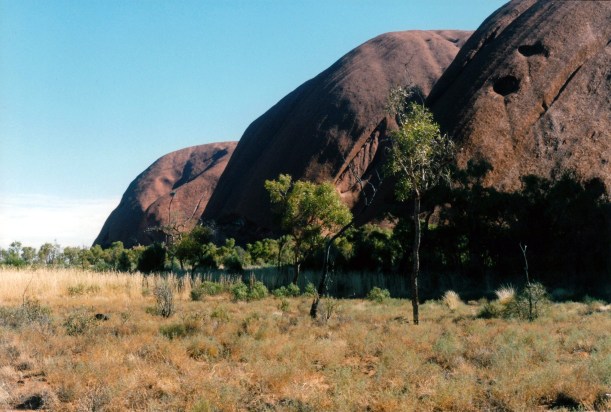
The Rock looming over us at the start of the walk
Even though we have done this walk before, it is still a great experience. The Rock really is a special place. There seem to be more sacred Anangu sites that one is asked not to photograph, than when we were last here. I am sure that I have, at home, photos of some of the now banned views.
It also seems to have grown much more vegetation – grass and shrubs – around the track and Rock, since the last visit. Is this from a good current season, combined with fewer rabbits? And/or good work managing and revegetating? It looks superb, anyway.

A water worn gully with little waterholes, some marked by vegetation
Ayers Rock is made of a hard type of sandstone that is coloured red by oxidation on the rock surface. Underneath the fairly thin layer of surface colour, the stone is grey.
Although it is a monolith – one big slab of rock – the surface has been shaped by wind and water erosion, and the effects of heating and cooling of the surface. So there are gullies down from the top, in places. Some of these make a kind of chain of little waterholes, down the face, when it rains. In some other areas, the smooth surface has been broken when alternate heating and cooling of the rock has caused sheets to break away and fall down into piles at the base. Wind and water have caused some intricate patterns inside these holes. There are also caves in places – but these are where photos are banned.
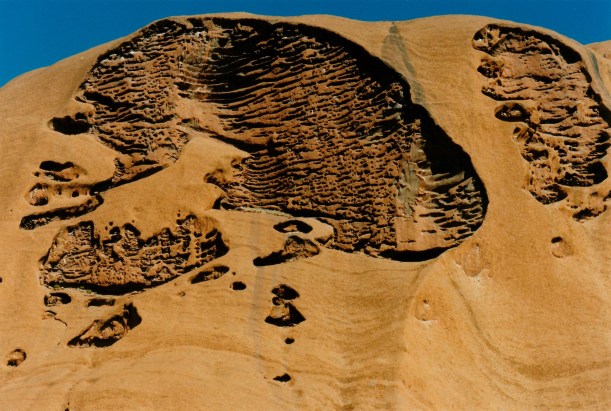
Large scale patterns where the rock surface has broken away – resembles a human brain?
It got quite warm as we walked, and the cloud burnt away. I was sorry that I’d opted for long trousers, having thought that it would be cool and windy.
Ate our lunch “around the back”, with about two thirds of the walk completed.
We saw a Thorny Devil on the walk! At last I have seen one in the wild. It was on bare ground, between grass clumps. It is a unique critter – definitely looks untouchable. It rocked back and forth, rather than going anywhere.
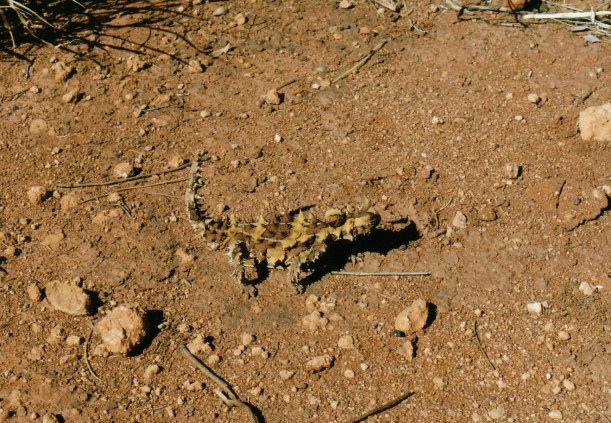
Thorny Devil trying to pretend it can’t be seen
Also spotted three new birds – singing honeyeater, grey headed honeyeater and a wood swallow.
We were tired by the end of the walk, so we sat at the base of the climbing track, for nearly an hour, and followed people’s progress up and down. Could see several obviously very unfit people who were silly enough to tackle it. Watching same and guessing how far up they will get before giving up, was quite engrossing! The Anangu request not to climb is quite clear, at the base, on signs.
After that entertainment, drove back to Yulara and collected my photos at the shop. They did an excellent job on these, I thought. I bought an “Age” newspaper. We bought fly nets to wear over our heads, as the flies had been annoyingly sticky on the walk today.
Refuelled Truck – 90cpl here.
At the Post Office, I mailed off some cards. There was no mail in for us, yet. We had checked this morning and found that the mail is not sorted and available until 4.30pm. It was a good thing that we did check with them, because there is a man with the same name as John, who works at the Resort, and we could have had our mail go astray.
I picked in the washing – all still there, despite the long absence – and put it away.
Then we walked to the nearby lookout hill and watched the sunset. The Rock went a deep red-brown. I intend to try to get different sunset effects on film through our time here. On the way back, went via the shops – still open – and put in another roll of film. I go through it quickly in places like this.

Waiting for the sunset at the Yulara Lookout

A little later – sunset from the Yulara Lookout
Tea was vegie soup, macaroni cheese, yoghurt and banana.
It was quite a cool night. There was a bright moon and scudding clouds – very pretty.
I was pleasantly weary from the day’s activities and went to bed about 9.30. John stayed up computering until about 1am.

